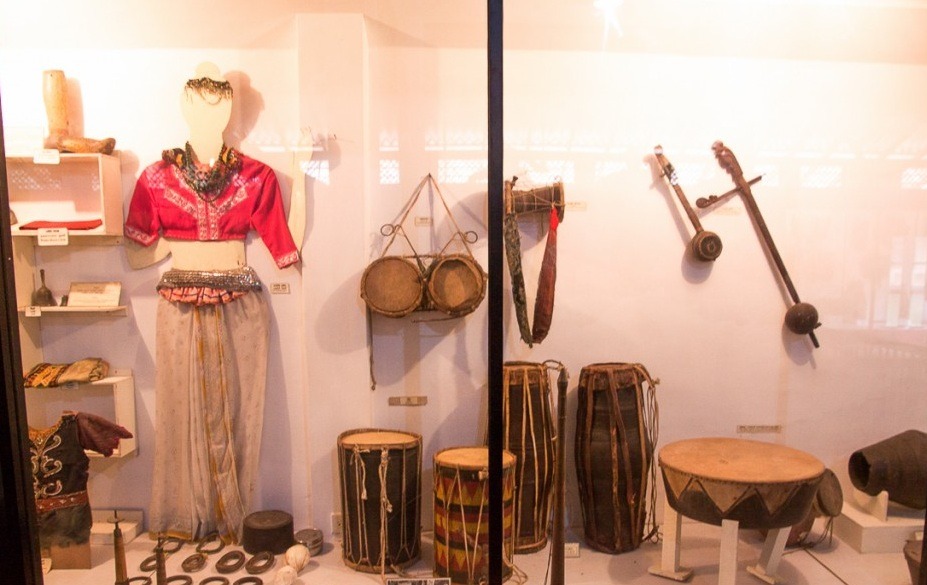Discovering Asia’s Oldest Piece of Textile
Textile is a standard requirement for anyone in the world today, it has made a long way since the human started to wear tree leaves to hide their body. It started with wearing tree leave due to many reasons such as escape from the cold, protection and camouflage. As time went by the key utility of the dress changed dramatically, today it is not only helping you to hide from the cold but also it functions as an ornament and judge your socials status.
The development of clothing of humankind made remarkable progress with the introduction of textile to make the dress. But who invented textile? This is a question that no one can answer yet and suppose to be a secret for time to come. However, the historical evidence suggests that human may have begun to wear clothing between 100,000 to 500,000 years ago.
A new discovery pertaining to the origin of textile was unearthed recently on the island of Sri Lanka; it is a piece of textile and solid evidence to prove the use of textile in southern Sri Lanka started way back in 3rd century BCE.
The discovery of a piece of textile that dates back to many millennia is another testimony for the rich historical past of Sri Lanka. A large number of traveller visit Sri Lanka in order to see historical monuments and ancient cities.
Pinnawala off Kegalle has located alone the Colombo-Kandy main road. When you drive from Colombo to Sri Lanka’s hill country, Kegalle and pinnawala are located about halfway down the track. Pinnawala is a popular destination for local and foreign tourists owing to the Pinnawala elephant orphanage.
Pinnawala is a major tourist place in Sri Lanka and included in Sri Lanka round tour packages. Pinnawala is also very popular for short trips such as one day trip from Colombo and beach resorts. Mostly, it is popular due to the presence of the largest herd of tamed elephants in the world.
The Pinnawala elephant orphanage, which is among the most popular tourist place in the Kandy, is visited by thousands of tourist every day. But, in this blog post, we do not discuss Pinnawala elephant orphanage. We are going to talk about one of the very important archaeological findings.
The recent discovery of oldest Asia’s textile that was found in a Dagoba, has added another site to the list of attractions in Pinnawala alone the orphanage. The Dagoba is known as Deliwela Kota Vehera and it is located in a secluded, calm and peaceful environment. The environment of this Buddhist temple is magnificent; it lies in thick, lush green vegetation surrounded by paddy fields.
Temple is located on a small hill which is around 20-50 feet in height from the ground. A narrow flight of steps lead you to the temple. The location of the temple believed to be the place where one of the greatest rulers of ancient Sri Lanka, King Parakramabahu, was born. The temple is popularly known as Dedigama Kota Vehera.
Asia’s oldest textile was found at the site recently. The building that is in octagon shape is to be found in the middle of the base, valuable artefacts along Asia’s oldest silk clothe found in this building. Because of the unique architecture of this building, it is known as Kota vehera. There are only three dagobas in this architecture in the island namely Yudaganawa in wellawaya, Dedigama in Kegalle and Deliwala Kota vehera.
Historical information suggests that the temple was built in 3rd century B.C by a regional ruler known as Keerthi Tissa under the patronage of great King Devanampiyatissa (250-210 B.C). Dr Senarath Paranawithana discovered the bricks, during the excavations, with Brahmi letters and the bricks are very similar to bricks found during 161-131 B.C. hence Dr.Senarath Paranawithana opines that it was built by King Dutugemunu during 161-131 B.C.
It was Mr H.C.P Bell who made the first remarks on the Deliwela Kota Vehera in 1890. According to the brief note left by Mr Bell, Deliwela Kota Vehera was 112 feet in height and the circumference is 640 feet. At the time of its discovery by Mr Bell it was in good shape and no damage from the treasure hunters.
According to Dr Senarath Paranawithana, the building was constructed using a natural upheaval of the ground. A layer of brick was laid covering the small hill; it is only the earth inside the thin shell, which is constructed of bricks.
A golden casket (about three inches height) discovered during the excavations in 1957. Archaeologists say Deliwela Kota Vehera is very similar to “Sanchi Stupa” in India and it is strong evidence of the strong religious contact between the two countries. No relic chamber found in the Dagoba as usual, but another 173 small caskets and 2 gemstone caskets were found alone the golden casket.
Eight relic chambers were discovered in the basement of the building. Each relic chamber contained small gold reliquary measuring 2-3 cm and the silk clothing was found in the octagon-shaped building. It had been used to cover the golden casket. Some more valuable artefacts were found at the site, 5 more golden reliquary and coins from the pre-Christian era.






